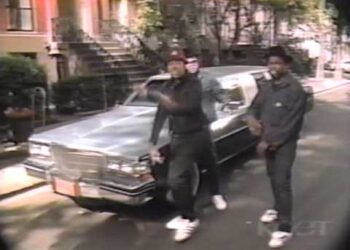Perhaps the coolest use of paper I’ve seen, combining print with the technology most people have on their desk:
You can print out the page and experience it yourself at the GE “Plug Into the Smart Grid” site.
Also, see this keynote from Bruce Sterling on the dawn of the Age of Augmented Reality.
Discussion
8 Thoughts on "Augmented Reality: Print Leverages Desktop Technology"
Very cool and remarkable! Will we one day see researchers holding journals up to their webcam in order to view 3D displays of figures, organs, chemical structures and so on? Perhaps print will not die after all, but evolve. 🙂
There are some very cool (and a bit more practical) augmented reality apps for the iPhone in the pipeline. I particularly like the NYC Subway one.
Beyond the gee whiz factor here, I’m not sure holding print up to a camera is a better interface than just having an online version of the printed article with the functionality built in.
Good point, but I think the opportunities are more abundant this way, as is the whiz-bang effect. Imagine the interest that would created if a magazine or journal were published with a picture like this on the cover (cheaper than color!), and by holding it up, you’d get a different “cover” depending on the picture? Or a different song plays? Or a secret code pops up if you’re in the first 500 and you get a free white paper? Or an advertiser has a raffle and a random user of this wins something, so you hold it up to see if you’ve won? The connection between the print and the online is what’s interesting. It’s really cool.
There’s definitely a novelty factor to be exploited here. Have you seen the video ad that’s going out in a magazine this week?
http://www.popsci.com/entertainment-amp-gaming/article/2009-08/cbs-and-pepsi-video-ad-appear-print
Or your journal publishes these for 3d protein models so that the molecule rotates on your screen for inspection. Or it does it on your smart phone instead.
I did one of these that had fireworks going off – laid paper flat on desk and had my own personal display in the ‘air’ over my keyboard. So this could work for modelling for sure.
http://www.youtube.com/watch?v=173HklZ0858 (not me by the way!)
I agree, one of those amazing moments. Actually I saw this as an ad, some time ago, but couldn’t quite see the potential:
Augmented reality hits the iPhone, in the Yelp app.
http://www.youtube.com/watch?v=Mk1xjbA-ISE&NR=1 An amazing video example of augmented reality.
![Reblog this post [with Zemanta]](http://img.zemanta.com/reblog_e.png?x-id=122b7c07-c982-4bf3-b967-e9ab692f3afc)


